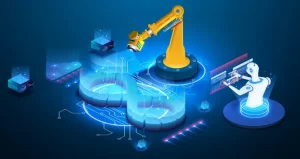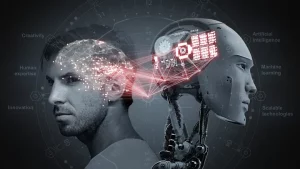Introduction:
Meet Sarah Thompson, a seasoned software engineer with over a decade of experience in the tech industry. With a passion for innovation and a keen eye for emerging trends, Sarah has dedicated her career to exploring the intersection of Machine Learning (ML) and traditional engineering disciplines. In this article, Sarah delves into the evolving role of software engineering, shedding light on how it transforms the landscape for future engineers.
The Evolution of Machine Learning (ML):

Software engineering has undergone a remarkable evolution, transitioning from a niche field to a cornerstone of modern technology. As the demand for software solutions continues to surge across industries, aspiring engineers must grasp the fundamental principles and practices of software engineering to thrive in today’s digital landscape.
The Gap Between Software and Machine Learning (ML):
In an increasingly interconnected world, the synergy between software and hardware has become indispensable. Future engineers must cultivate a deep understanding of both domains, embracing concepts such as embedded systems and firmware development to bridge the gap between the virtual and physical realms.
Empowering Machine Learning (ML) with Computational Thinking:
At the heart of software engineering lies computational thinking a problem-solving approach that leverages algorithmic reasoning and abstraction. By honing their computational thinking skills, engineers can tackle complex challenges with creativity and efficiency, paving the way for groundbreaking innovations.
Harnessing the Power of Artificial Intelligence and Machine Learning:

Artificial intelligence (AI) and machine learning (ML) represent the cutting edge of software engineering, offering unprecedented opportunities for innovation. From autonomous vehicles to predictive analytics, AI-driven solutions are reshaping industries and empowering engineers to push the boundaries of what’s possible.
Software Engineering in Interdisciplinary Collaboration:
In today’s multidisciplinary landscape, collaboration is key to driving meaningful innovation. Software engineers increasingly find themselves working alongside experts from diverse fields, from biomedical engineering to sustainable infrastructure, to tackle global challenges and drive positive change.
Future Trends and Opportunities for Software Engineers:
Looking ahead, the future of software engineering holds boundless possibilities. From the rise of edge computing to the democratization of software development tools, aspiring engineers have a wealth of opportunities to explore and contribute to shaping the future of technology.
Visual Table: Key Insights
| Key Insight | Description |
|---|---|
| Evolution of Software Engineering | From niche field to cornerstone of modern technology |
| Bridging Software and Hardware | Synergy between virtual and physical realms |
| Computational Thinking | Problem-solving approach leveraging algorithmic reasoning and abstraction |
| AI and ML | Transformative power in reshaping industries and driving innovation |
| Interdisciplinary Collaboration | Collaborative efforts across diverse fields for impactful innovation |
| Future Trends and Opportunities | Edge computing, democratization of tools, and emerging technologies |
Comparative Table: Software Engineering vs. Traditional Engineering
| Feature | Software Engineering | Traditional Engineering |
|---|---|---|
| Core Focus | Software development, algorithms | Physical structures, materials |
| Tools | IDEs, version control systems | CAD software, testing equipment |
| Development Process | Agile methodologies, continuous integration | Design iterations, prototyping |
| Deliverables | Software applications, algorithms | Blueprints, schematics |
| Flexibility | Easily adaptable to changing requirements | More rigid, based on physical constraints |
| Job Outlook | High demand, diverse career opportunities | Stable, evolving with industry needs |
Conclusion:
As software engineering continues to redefine the boundaries of innovation, future engineers must embrace its transformative potential. By cultivating a strong foundation in software development principles and staying attuned to emerging trends, aspiring engineers can position themselves at the forefront of technological advancement, driving positive change and shaping the future of engineering disciplines.










